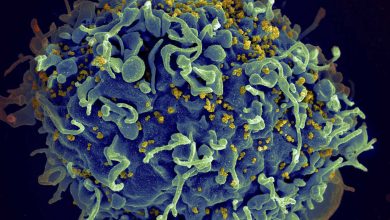Measles could once again become endemic in the US, the CDC warns

In 2000, after a decades-long public health battle and a Herculean vaccination program, the United States achieved a coveted status: measles elimination. This designation means that the highly infectious measles virus is no longer endemic in the United States – defined as continuous transmission in the country over 12 months or more in the presence of an effective disease surveillance system. The country has gone from 3 to 4 million children getting sick each year from this serious infection, to just dozens of cases, mostly travel-related.
But what is alarming is that the country’s elimination status is now under threat. Measles cases in the first quarter of 2024 increased more than 17-fold compared to cases seen in the first quarters of 2000 to 2023. Measles vaccination rates among kindergartners also declined during this period. period, with vaccination coverage for the last three consecutive years. below the 95 percent target needed to prevent sustained transmission. Outside the United States, measles cases are exploding following pandemic-related disruptions to routine childhood immunization programs. Overall, conditions are ideal for measles to regain a foothold in the country — and the Centers for Disease Control and Prevention is clearly concerned.
“The rapid increase in the number of measles cases reported during the first quarter of 2024 represents a renewed threat to elimination,” CDC researchers write in a new analysis of measles cases and the country’s surveillance system. The analysis was published Thursday in the CDC’s Morbidity and Mortality Weekly Report.
The analysis takes an in-depth look at current and recent measles cases in the country: how they got here, how and why they spread once here, and how effective our public health systems have been in tracking them and break the chains of transmission. The good news is that our monitoring systems seem to be working well. “Various sizes of transmission chains were detected, including isolated cases, suggesting that sustained transmission of measles would be quickly detected,” notes the CDC.
But there are many reasons to fear that this will not be enough. In 2019, the country nearly lost its elimination status amid two prolonged outbreaks in New York and New York. If since then, the COVID-19 crisis has kept measles at bay, the conditions for a resurgence have only deteriorated.
How could this happen?
If the United States loses its status, the new analysis paints a clear picture of how that could happen: An unvaccinated U.S. resident will contract an infection abroad and bring it back to an undervaccinated community. Unvaccinated but vaccine-eligible children in this community contract the virus and create a lasting chain of transmission.
The CDC documented 338 cases of measles between January 1, 2020 and March 28, 2024. The median age of cases was 3 years. Of the 338 cases, 97 occurred in 2024. (The current count for the year now stands at 113.) Of the 338 cases, 326 (96 percent) were linked to import (12 cases, or 4 percent hundred, had an unknown source). The 326 includes 93 cases directly imported into the country, of which 59 (63%) involved U.S. residents. Of these 59, 53 (90 percent) were eligible for the vaccine but not vaccinated or had unknown vaccination status.
Of the 338 total cases, 309 (91 percent) were unvaccinated (68 percent) or had unknown vaccination status (23 percent). Of the 309 cases, 259 (84 percent) were eligible for the vaccine, the remainder involved babies 6 to 11 months too young for routine vaccination (13 percent) or babies younger than 6 months who are too young for vaccination (3 percent).
In recent years, the most common countries for measles imports were the Eastern Mediterranean and African regions. But so far in 2024, six of 16 imports (37.5%) have come from Europe (three) and East Asia (three), representing a 50% increase in imports from these regions over the past three years. In other words, measles is increasing globally, increasing the risk of importation to the United States.
And as such: “The measles elimination status of the United States will continue to be threatened by the global increase in measles incidence and the decline in measles vaccination coverage at the global, national levels and local,” concludes the CDC. Overall, the vaccination rate is still high enough in the United States to prevent large-scale outbreaks. But to prevent measles from becoming endemic again, the United States must improve measles vaccination rates, encourage vaccination before international travel, identify vulnerable communities that are undervaccinated, and promptly investigate suspected measles cases. advise CDC researchers.
News Source : arstechnica.com
Gn Health





